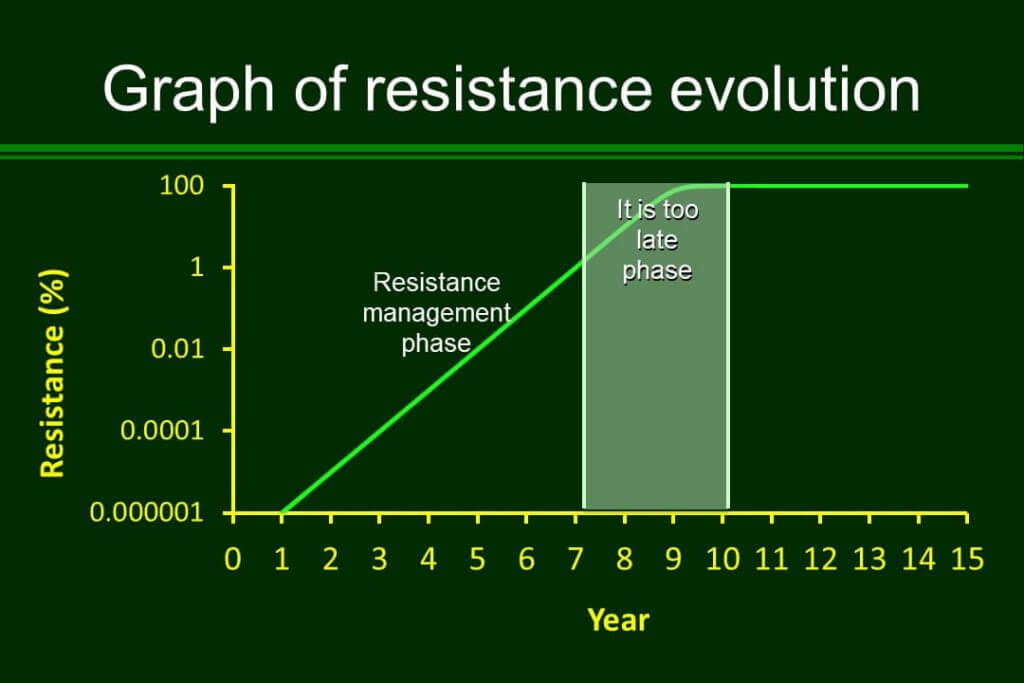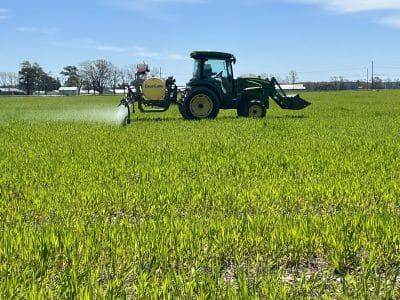Research from the past few years has shed light on how important it is to mix herbicides rather than rotate herbicides.
Herbicide resistant species become visible in the field when the herbicide chosen to combat that weed fails, at which point a new strategy should be implemented for better weed control.
When it comes to chemical management, farmers are hearing about rotating different herbicides and using multiple herbicide groups. They also hear about tank mixing benefits compared to rotating herbicide sites of action. We developed a set of short videos to explain the benefits of tank mixes rather than rotating herbicide sites of action.
In the first video, Dr. Patrick Tranel explains the reasons why tank mixes are the best chemical management practice and encourages farmers and crop consultants to select at least two effective herbicides with different sites of action as a consistent strategy for weed resistance management.

Evolution of resistance over time assuming repeated used of a single herbicide to which a weed population was not previously exposed. The y-axis shows the frequency of plants in the field that are resistant to the herbicide; note that, when plotted on a log scale, there is a linear increase in resistance. Once resistance in the field becomes apparent to the farmer (>1% of the plants are resistant), the evolutionary process has essentially played out, and it is too late to manage resistance. Resistance management strategies should be implemented beginning with the very first application of a new herbicide. Digging deeper in the second video, Dr. Tranel explains how he and other scientists and Extension Agents were able to conclude that tank mixing is a better option than herbicide rotation. A study done with data collected from over a hundred farms, over many years, helped to understand how herbicide resistant species evolve depending on how fields are managed.
To see how this research was conducted and what the extended conclusions are, watch this video.
Credits:
Researchers:
Patrick Tranel, University of Illinois, Urbana-Champaign, IL
Mark VanGessel, University of Delaware, Georgetown, DE
Michael Flessner, Virginia Tech, VA
1st video:
Edits:
Claudio Rubione, Mark Van Gessel, Victoria Acroyd, Patrick Tranel
2nd video:
Credits: Webinar footage provided courtesy of WeedSmart, to watch original and complete version visit: WEBINAR
Videos: Claudio Rubione


